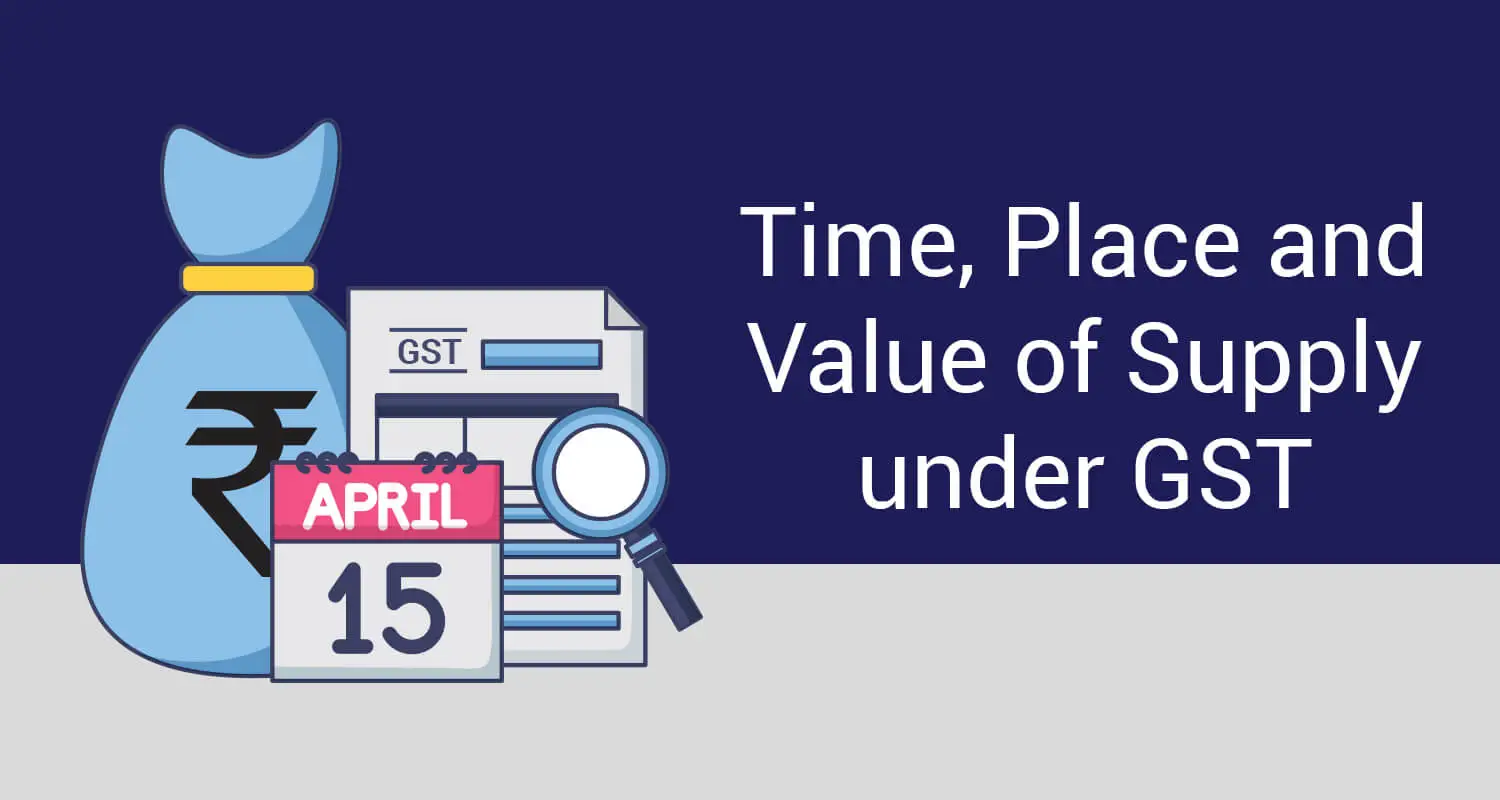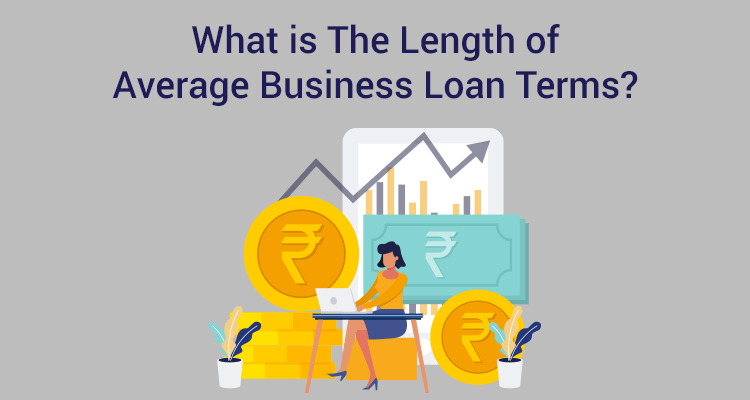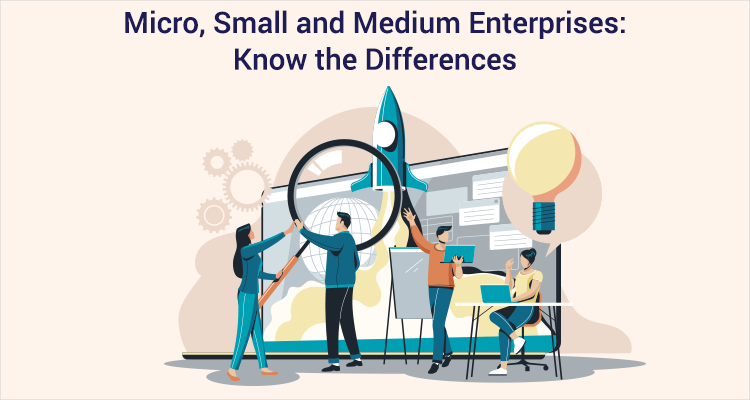Time, Place and Value of Supply under GST

The Goods and Services Tax (GST) is a comprehensive indirect tax regime in India. To ensure accurate tax collection and compliance, the concept of Time, Place and Value of Supply (TVS) plays a crucial role. This article explains each element and its significance in determining GST liability.
What is Time, Place and Value of Supply under GST?
- Time of Supply: This refers to the specific point in time when a supply of goods or services is deemed to have occurred. It determines the due date for tax payment by the supplier.
- Place of Supply: This concept identifies the location where the supply is considered to have taken place. It dictates the applicable GST rate—CGST & SGST for (interstate or intrastate GST) within the same state or IGST for (interstate and intrastate GST) between different states.
- Value of Supply: This refers to the taxable value on which GST is calculated. It ensures the correct amount of tax is collected on the actual transaction value.
Why are Time, Place and Value of Supply Important?
Understanding TVS is crucial for businesses under GST for the following reasons:
- Correct Tax Application: Identifying the place of supply in GST ensures charging the appropriate GST rate (CGST/SGST or IGST).
- Accurate GST Calculation: Knowing the value of supply ensures the correct amount of GST is levied on the transaction.
- Timely Tax Payment: Determining the time of supply helps businesses identify the due date for filing GST returns and tax payment.
Knowing the "time of supply under GST" is crucial for businesses. It determines the exact moment when a good or service is considered "supplied," which in turn dictates:
- Tax Payment Due Date: This is the date by which you, the supplier, need to pay the collected GST to the government.
- GST Return Filing: Knowing the time of supply helps you determine the correct tax period for filing your GST return.
Here's a breakdown of time of supply rules and some examples for better understanding:
General Rule for Goods:
The time of supply in GST for goods is the earliest of these two dates:
- Date of Invoice Issue: This is the date you create and issue the invoice to your customer for the supplied goods.
- Date of Payment Received: This is the date you receive payment from your customer for the goods.
Example 1:
- You supply goods to a customer on April 1st, 2024.
- You issue an invoice on April 5th, 2024.
- The customer pays you on April 10th, 2024.
In this scenario, the time of supply will be April 5th, 2024 (the date of invoice issue) since it's the earliest date.
Example 2:
- You supply goods to a customer on May 15th, 2024.
- You issue an invoice on May 20th, 2024.
- The customer pays you on June 1st, 2024.
Here, the time of supply will be May 20th, 2024 (the date of invoice issue).
Important Note:
- If you receive an advance payment (up to Rs. 1,000) exceeding the invoice amount, you can choose the date of invoice issue as the time of supply for the excess amount. However, this is entirely optional.
Sapna aapka. Business Loan Humara.
Apply NowTime of Supply of Service Under GST:
The rules for services can be slightly different. It depends on the type of service and the agreement with your client. Generally, the time of supply for services can be:
- Date of Completion of Service: This is the date when you have fully rendered the service to your client.
- Date of Invoice Issue: The date you create and issue the invoice to your client for the service provided.
- Date of Payment Received: The date you receive payment from your client for the service.
Here are some examples to understand the concept of time of supply for services under GST:
Example 1: Web Design Service
- You provide web design services to a client and complete the project on March 1st, 2024.
- You issue an invoice on March 5th, 2024.
- The client pays you the full amount on March 10th, 2024.
In this case, the time of supply will be March 1st, 2024 since it's the date the service was completed (earliest date).
Example 2: Consultancy Service
- You offer consultancy services to a client for a monthly retainer fee.
- You raise an invoice on the 1st of every month for services rendered in that month.
- The client makes the payment within 7 days of receiving the invoice.
Here, the time of supply will be the 1st of each month you raise the invoice, as that's when you've essentially rendered the service for that period (earliest date).
Example 3: Advance Payment Scenario
- You provide training services and require a 50% advance payment before commencing the program.
- You receive a 50% advance payment on May 15th, 2024.
- You complete the training program and issue the invoice for the remaining amount on June 1st, 2024.
Since the advance payment is more than Rs. 1,000, you have a choice:
- Option 1: Consider the time of supply for the entire service (including the advance) as May 15th, 2024 (date of advance payment).
- Option 2: Consider the time of supply for the advance payment as May 15th, 2024, and the remaining amount's time of supply as June 1st, 2024 (date of invoice).
Time of Supply in GST under Reverse Charge:
In specific scenarios, the recipient of the supply (registered taxpayer) is liable to pay GST under the reverse charge mechanism. The time of supply in such cases is the date of receipt of the service or the date of debit note (if issued).
Place of Supply
- For Goods: The place of supply is generally the location where the goods are delivered and ownership is transferred.
- Example: A company in Maharashtra sells goods to a customer in Delhi. The place of supply will be Delhi, and IGST will be applicable.
Place of Supply for Services:
- For Services: Generally, the place of supply for services is the location of the service recipient.
- Example: A consultant in Mumbai provides services to a client in Bangalore. The place of supply will be Bangalore, and IGST will be applicable.
Value of Supply of Goods or Services:
The value of supply is a crucial concept in GST as it determines the exact taxable amount on which GST is levied. It goes beyond just the base price of the goods or services and includes various other charges associated with the transaction. Here's a breakdown of what's included in the value of supply, along with some examples:
Components of Value of Supply:
- Price Charged: This is the basic selling price of the goods or services agreed upon between you (the supplier) and your customer.
- Incidental Charges: These are any additional charges directly linked to the supply of goods or services. Here are some common examples:
- Packing, forwarding, and insurance charges.
- Transportation and freight charges.
- Installation and commissioning charges.
- Royalty or license fees directly related to the supply.
- Taxes (Except GST): Any taxes, cess, duties, fees levied or collected by the supplier under any law (except GST itself) are included in the value of supply.
Important Points to Remember:
- Value of Supply ≠ Maximum Retail Price (MRP): Don't confuse the value of supply with the MRP printed on a product. The MRP may include additional charges like marketing costs that are not part of the taxable value.
- Discounts: Generally, discounts offered before or at the time of supply are deducted from the price charged to arrive at the value of supply. However, discounts offered after supply might not be considered for GST calculation.
Examples of Value of Supply:
Example 1: Selling a Mobile Phone
- Price of the phone: Rs. 10,000
- Packing and forwarding charges: Rs. 100
- Transportation charges: Rs. 50
- GST Rate: 18%
Here, the value of supply will be:
Rs. 10,000 (Price) + Rs. 100 (Packing) + Rs. 50 (Transport) = Rs. 10,150
GST will be calculated on Rs. 10,150.
Example 2: Restaurant Service
- Cost of food: Rs. 200
- Service charge: Rs. 30
- GST Rate: 5%
The value of supply will be:
Rs. 200 (Food) + Rs. 30 (Service Charge) = Rs. 230
GST will be calculated on Rs. 230.
Conclusion
By understanding Time, Place and Value of Supply under GST, businesses can ensure accurate tax calculation, compliance with regulations, and timely tax payments. It is recommended to consult a tax professional for specific guidance based on your business transactions.
FAQs
Q1. What are Time, Place and Value of Supply (TVS) under GST?
Ans. Think of TVS as three key details you need to know about your sales:
- When: The exact date a sale is considered "done" for GST purposes (Time of Supply). This affects your tax payment deadline.
- Where: The location where the sale is deemed to happen (Place of Supply). This determines your GST rate (CGST & SGST for local sales or IGST for out-of-state sales).
- How Much: The total taxable amount on which GST is calculated (Value of Supply). This ensures the correct amount of tax is collected.
Q2. When is a sale considered "done" for GST (Time of Supply)?
- For Goods: Generally, it's the earlier of the date you issue an invoice or the date you receive payment from the customer.
- For Services: It can be a bit trickier. It could be the date you finish the service, the date you receive payment, or the date you issue an invoice - whichever comes first.
Q3. What's included in the Value of Supply (taxable amount)?
Ans. It's not just the base price of your goods or services! Here's what's added in:
- The Price: The base selling price you charge the customer.
- Extra Charges: Any fees directly linked to the sale, like packing, shipping, or installation charges.
Q4. What if I get paid in advance for a sale?
Ans. In some cases, if you receive an advance payment over Rs. 1,000, you might have the option to consider the advance payment date as the time of supply for that amount. However, it's best to consult a tax advisor for specific advice on advance payments and TVS.
Sapna aapka. Business Loan Humara.
Apply NowDisclaimer : The information in this blog is for general purposes only and may change without notice. It does not constitute legal, tax, or financial advice. Readers should seek professional guidance and make decisions at their own discretion. IIFL Finance is not liable for any reliance on this content. Read more



